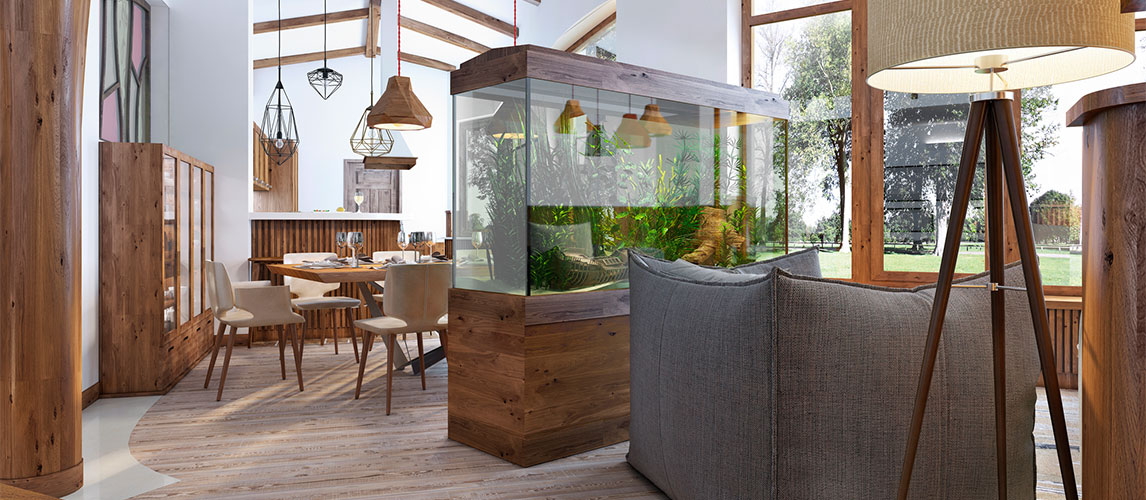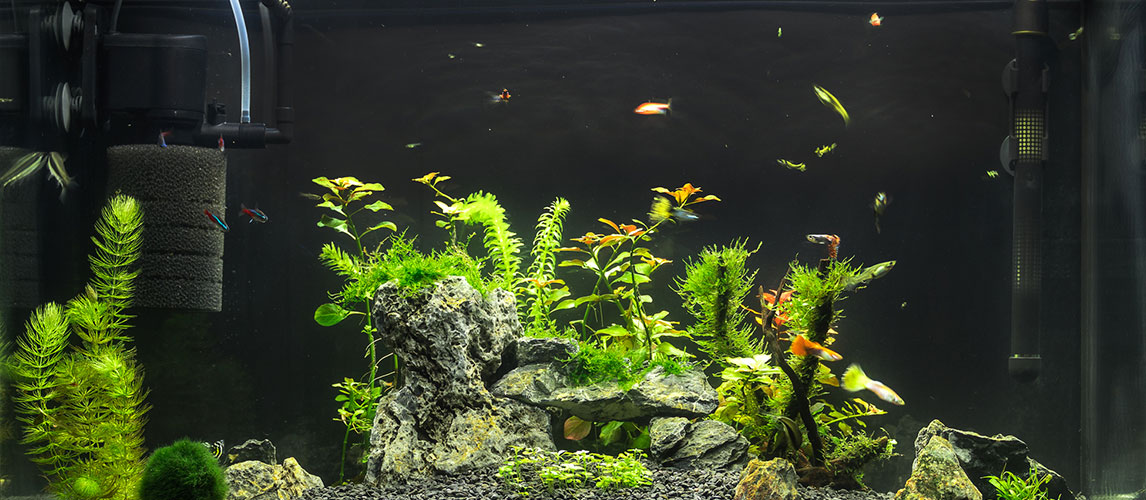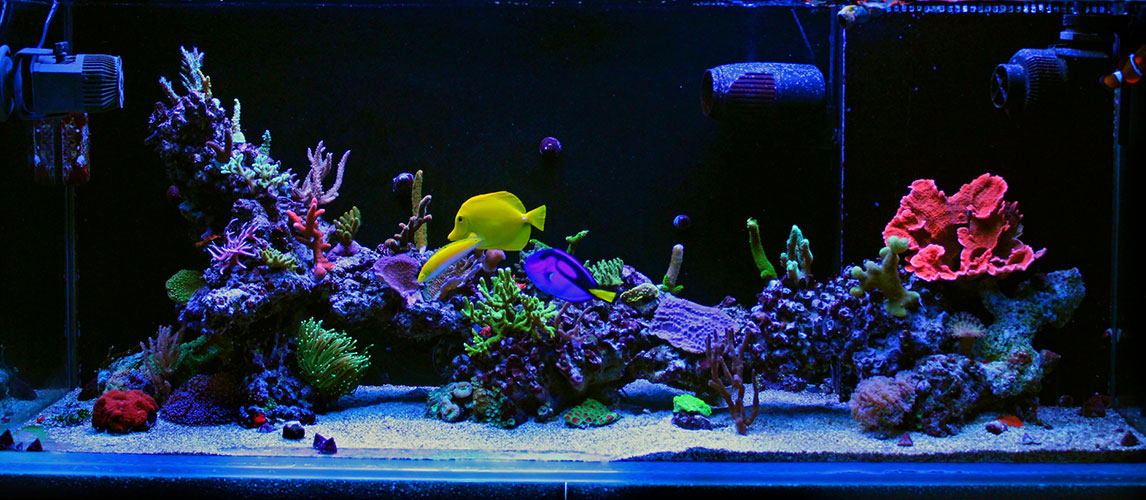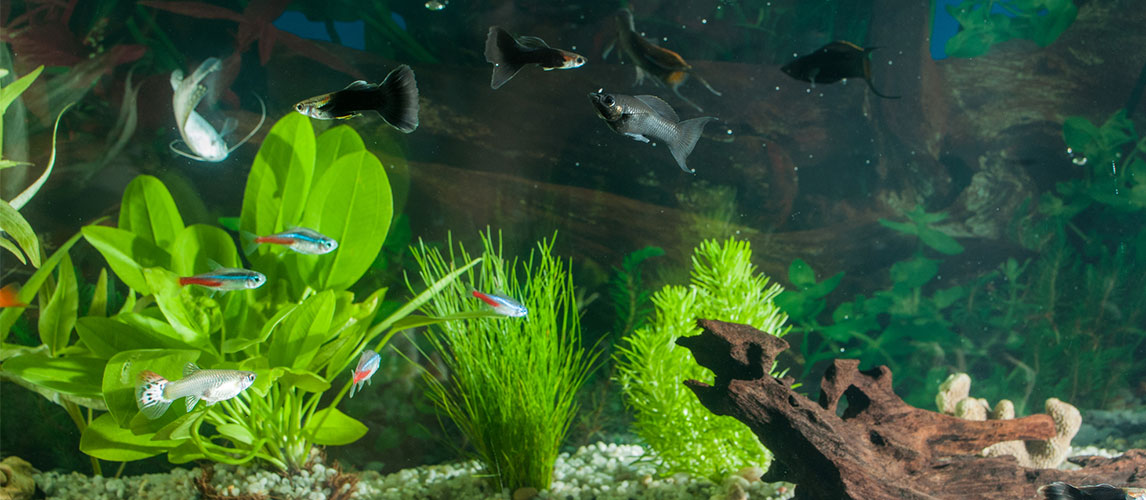Many aquarists may be reluctant to add live plants to their tank. After all, it’s a huge commitment, is it not? Actually, many species of plants suitable for aquariums are easy to maintain whilst providing an array of benefits. Not only will adding plants to your oxygenate your aquarium water, thereby reducing algae growth, your fish will feel secure hiding out in their greenery. Besides, if your freshwater fish are feeling peckish during the day, they can always snack of aquarium plants, which function as a natural food source for our aquatic friends.
However, how is it possible to know which plant species will please both you and your freshwater friends? Whether you’re a novice aquarist keen to invest in a traditional free-floating species of plant like Duckweed or a seasoned aquarium-lover wanting to introduce carnivorous plants such as Floating Bladderwort to your tank, we’ve assembled a complete species guide featuring ten of our personal favorite plant species for you to browse below.
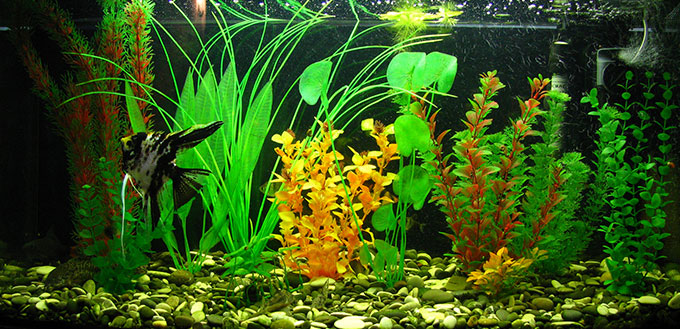
Duckweed (Lemna minor L.)
We’ve all heard the story of that one friend who, in thinking they were stepping on just another patch of grass, found themselves falling into ice-cold water. Otherwise referred to by scientists as Lemna minor L., duckweed is a free-floating plant that consists of rounded, oval leaves. Fascinatingly enough, one scientific discovery – although still in the theoretical stage – is that the length of the Duckweed root is directly linked to the amount of nutrients present in your pond.
The debate rages on between those who own aquariums concerning whether duckweed is a nuisance or not. As duckweed multiplies, removing it poses a bit of an inconvenience – the plant is astonishingly able to double its biomass in just ten days. However, duckweed won’t only look great covering the top of your aquarium, it will stop algae growth by removing nitrate from water. Although regular maintenance is required to keep Duckweed under control, we believe including it in your aquarium is worth it to maintain a healthy and nutritious environment for your aquatic creatures.
Brazilian Pennywort (Hydrocotyle leucocephala)
Ideal for satisfying impatient aquarium lovers, Brazilian Pennywort (hydrocotyle leucocephala) is able to reach an impressive eight inches or more in height in only a matter of weeks. Originating from the wetlands and marches of southern countries like Southern Mexico, the appeal of the plant is largely due to its vivid whiteish roots. Plus, if a Brazilian Pennywort reaches the surface of the water, the white flowers it produces are quite exquisite.
Brazilian Pennywort plants are low maintenance enough to be suitable for beginners. What’s more, owners of Brazilian Pennywort can choose whether or not they want to keep it as a rooted aquarium plant or as a floating plant.
Water Lettuce (Pistia stratiotes)
Although the term water lettuce is simple enough, the scientific name, Pistia stratiotes, it actually comes from the Greek word “pistos”, meaning “water” – referring to its preference for an aquatic habitat. This plant is a pan-tropical plant, meaning that it thrives in a number of countries south of the river. Its leaves, interestingly enough, have tiny hairs all over them. These hairs engender a basket-like effect. These baskets hold air, which allows this spectacular plant to float.
However, this plant can be invasive if left to run rampant, thereby engendering debate that water lettuce may not be a plant for beginners after all. As the plant sits amongst aquarium surface plants group, its ability to form thick, floating mats on the surface of the water have been known to kill fish by depleting their oxygen levels. On a similar note, the leaves of a water lettuce contain poisonous calcium oxalate crystals which, if ingested, may be lethal. On account of these unfavorable qualities, this plant has actually been deemed illegal in parts of the USA, including Texas and Florida. Therefore, although water lettuce presents itself as a innocent little plant, only invest in this aquatic plant if you’re willing to put the work in.
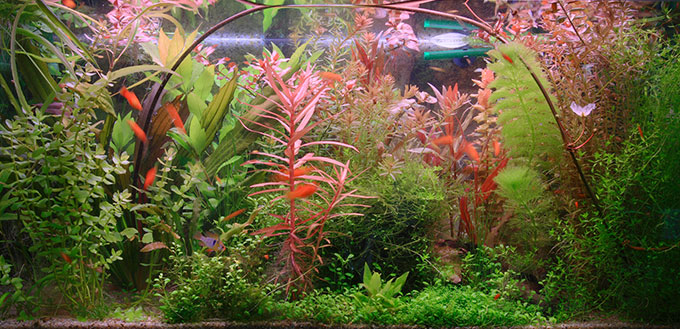
Ludwigia Repens (Ludwigia L.)
Boasting a striking appearance due to their dark red leaves and stalk, this variety of Ludwigia is a great addition to any aquarium as a result of its contrast with the greenish hues of the aquarium. Originating from the tropical waters of Central and North America, this aquatic front-runner requires a substantial amount of nutrient-rich substrate to ensure it thrives, which can be found in our handy substrate guide here.
Although the Ludwigia Repens doesn’t ask much of its owners, it does, however, need to live in an environment with sufficient lighting. If made to live in an environment with low light, its lower leaves tend to fall off, whereas ensuring your Ludwigia Repens lives in an environment boasting an optimal amount of light will further accentuate the striking red color of this beautiful aquatic plant.
Normal Salvinia (Salvinia)
The normal salvinia is a floating plant that grows in clusters at the surface of the water. This floating fern was, interestingly enough, a tribute to 17th century Italian scientist Anton María Salvini by his student Jean-François Séguier who published the plant.
However, be wary of this plant if you have a hang-on back power filter. Why? The breakneck speed this plant grows at means that the top of a tank may be completely covered in only a matter of weeks. Believe us when we say it’s relentless in its pursuit of square feet. You’ll have to “net” chunks of Norma Salvinia out at regular intervals to prevent it from enveloping the entire water surface – and beyond!
Hornwort (Ceratophyllum)
Amongst plants that float on water, a Hornwort is one of the easiest floating freshwater aquarium plants to maintain. If you’re searching for definitive proof, simply cast your eye over a map detailing its growth. The Hornwort, a term which refers to plants of the genusa Ceratophyllum, lives happily in every continent in the world excluding Antartica. There are 100-150 species of Ceratophyllum in the world, with the most common in aquariums being Ceratophyllum demersum.
As you can probably guess from its success in the wild, the Hornwort is a sturdy plant that can easily adapt to rough conditions. Accordingly, it’s a fantastic plant for beginners to invest in. What’s more, due to its rapid growth, buying a Hornwort is fairly inexpensive. All in all, this multi-purpose plant will spruce up any fish tank you choose from our aquarium guide.
Java Moss (Taxiphyllum barbieri)
Keen to jazz up your aquarium surfaces? Java moss is the plant for you. Easy to grow, this plant requires neither aquarium light or much water to grow very quickly.
To attach java moss to the surfaces, no aquarium substrate or gravel is required. Rather, you’ll need some fishing line or cotton thread to attach the java moss to the stone and ornament you desire. As the cotton thread or fishing line decomposes over time, the java moss will have resolutely attached itself onto your chosen object without any help of string required.
Crystalwort (Riccia Fluitans)
Its undoubtedly the vivid aesthetic hat Riccia Fluitans brings to any aquarium that begets its popularity, outshining the majority of floating aquarium plants. Amongst aquarists, the plant is colloquially referred to as Crystalwort whereas Riccia Fluitans is this plant’s scientific name.
The floating plant requires no substrate to prosper. As long as your aquarium contains an admirable protein skimmer, your Crystalwort will get by just find. If your tank doesn’t already contain a protein skimmer, you can find a reliable model in our handy guide.
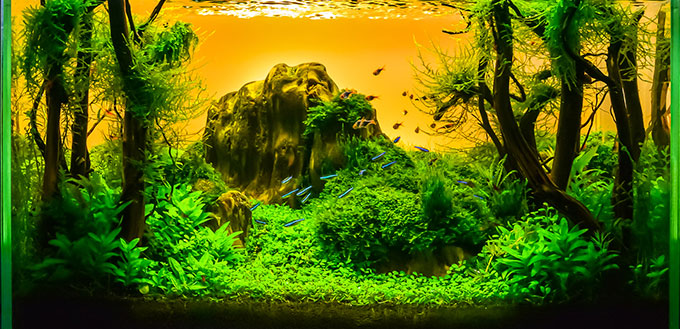
Duckweed Fern (Azolla)
The genus Azolla encompasses seven different species of aquatic ferns that don’t resemble quintessential ferns but rather appear more like duckweed. Renowned as one of the fastest growing aquatic plants on the planet, some species of Azolla are capable of doubling their biomass in a staggering three days alone. Although your fish and freshwater insects will adore the considerable amount of food and hiding spots the rapid development of this fast growing fern will provide, you’ll have to ensure you maintain your Azolla’s growth so your tank doesn’t end up as an untameable planted aquarium!
Floating Bladderwort (Utricularia gibba)
Leaving one of our favorite floating aquatic plants till last, we present to you the Floating Bladderwort – an excellent example of a carnivorous plant that has different requirements than other aquarium plants. Yes, the fact that the Floating Bladderwort is carnivorous does mean this floating plant is the aquatic equivalent to the Venus Flytrap. Floating bladderworts who possess larger traps are even able to catch larger tadpoles. Therefore, if you’re attached to smaller fish in your tank, a Floating Bladderwort is not for you!
As can be estimated, a Floating Bladderwort is, indeed, free-floating, meaning it doesn’t require aquarium gravel or substrate to blossom. And when the Floating Bladderwort reaches its full potential, you’ll know –its wonderfully bright yellow flowers make it a great choice for aquarists who long for a bright tank aesthetic.



